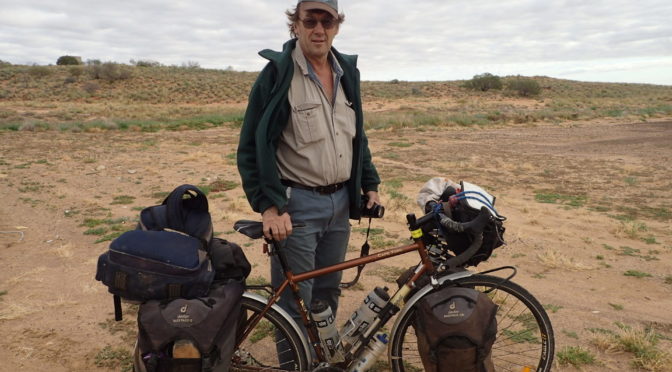Chris Mitchell the National Parks ranger told me how to get to the Diamantina Gates (a gorge through which the river surges when in flood) and saw me on my way. Thanks for the talk about the recovery in soil crusts, reductions in river turbidity, increase in perennial vs annual vegetation and other changes becoming evident nearly 20 years after cattle were removed from this desert environment. I looked at the scalded clay pans differently from here on.



The rest of the day was a hard, sweaty slog into a strong northerly headwind across claypans and low gibber ridges. Just when I thought I was doing it tough the ruins of the Mayne Hotel (a drovers grog shop on what must have been a busy stock route in the late 1800s, early 1900s) came into view. Imagine being the family of the proprietor on a stinking 45C day in the middle of the 1901 drought in this environment!

Then to finish off the day, the wind dropped a bit but the road developed more and more mud holes requiring dismounting and walking around or through before going on for another half kilometre. Finally found a camp on the edge of a gibber ridge and a sandy flood way just on dark but couldn’t get the gidgee leaves to light so resorted to using methylated spirits from my stove to start the dinner fire.
Then to bed knowing that tomorrow would be more headwinds, more mudholes, more clay pans and corrugations and always the threat of rain making the road impassable ‘tomorrow’.

